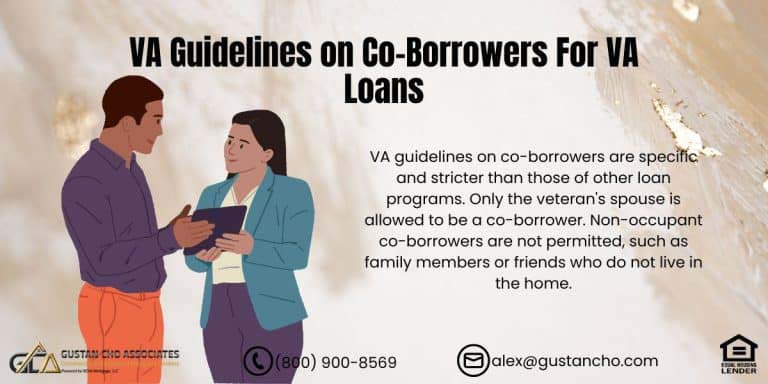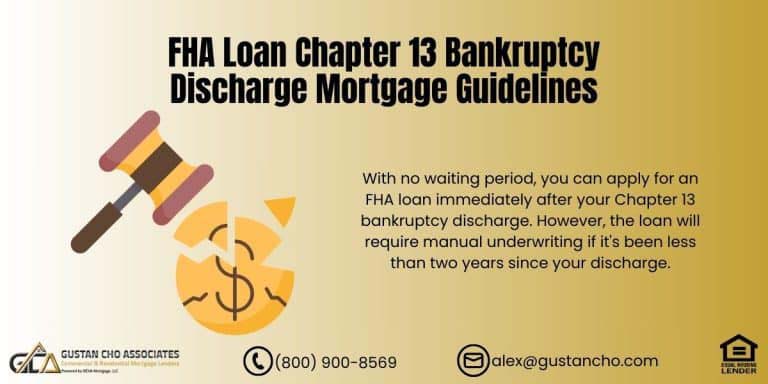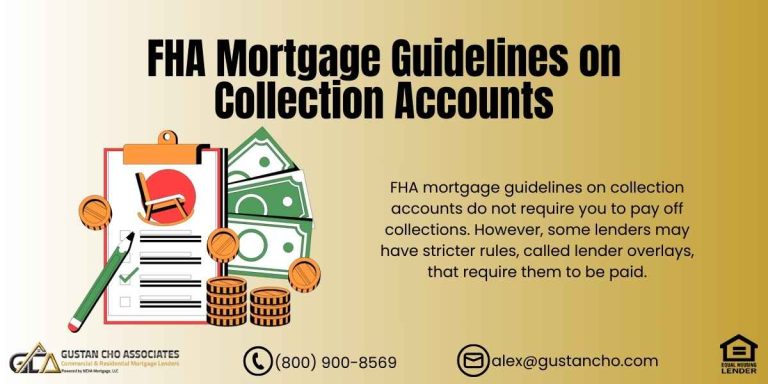After experiencing financial difficulties, it can be overwhelming to navigate the intricacies of mortgage lending. The process can be complex and confusing, but it can be made easier with the right guidance and support. For those who have gone through Chapter 13 bankruptcy, it’s essential to comprehend how to reintegrate into the housing market.
Fannie Mae, one of the primary sources of financing for mortgage lenders, frequently revises its Fannie Mae Chapter 13 guidelines to correspond with the changing economic conditions and the changing requirements of borrowers.
This article will explore the updated Fannie Mae Chapter 13 guidelines about Chapter 13 bankruptcy. This reflects Fannie Mae’s commitment to facilitating access to homeownership while ensuring responsible lending practices. Whether you’re a borrower planning your next steps or a financial advisor aiding clients through their recovery journey, staying informed about these guidelines is essential.
The Role of Fannie Mae and Freddie Mac
The government sponsors Fannie Mae and Freddie Mac, which aim to enhance the liquidity of the mortgage market by setting standards for conventional loans. These two giants are the largest buyers of mortgages on the secondary mortgage market, which is crucial for maintaining capital flow within the mortgage industry.
Lenders use a warehouse line of credit to fund loans at closing and to replenish this line, they must sell the funded loans. This allows lenders to continue financing new loans, perpetuating the lending cycle. Smaller lenders typically sell their originated loans to larger mortgage bankers.
As long as these loans conform to the agency guidelines, including the Fannie Mae Chapter 13 Guidelines, Fannie Mae and Freddie Mac will purchase them, thus supporting ongoing liquidity and loan availability in the market.
Filed Chapter 13? You May Still Qualify for a Fannie Mae Loan
Conventional loans are possible just 2 years after discharge from Chapter 13. Check Your Eligibility for a Fannie Mae Loan Today!
How Mortgage Bankers Sell Funded Loans On The Secondary Mortgage Markets
In the mortgage industry, larger mortgage bankers typically maintain the servicing rights of the mortgages while purchasing loans from smaller lenders. These smaller lenders repay their warehouse lines of credit, enabling them to originate and fund additional loans.
After smaller lenders acquire loans, bigger mortgage lenders combine them and sell them to major aggregators like Fannie Mae and Freddie Mac in the secondary mortgage market. However, it is important to note that Fannie Mae and Freddie Mac will only purchase loans that adhere to their specific agency mortgage guidelines.
Eligibility is possible when securing conventional loans after bankruptcy. Still, borrowers must adhere to the prescribed minimum waiting periods post-bankruptcy, as the Fannie Mae Chapter 13 guidelines stipulate.
How Fannie Mae And Freddie Mac Provide Liquidity In The Mortgage Markets
Fannie Mae and Freddie Mac enhance liquidity for lenders by purchasing conforming loans. This allows lenders to use the proceeds from these sales to repay their warehouse lines of credit. Lenders can originate and fund additional loans by clearing these lines, thereby perpetuating this cycle.
Conforming loans and meeting Fannie Mae and Freddie Mac’s criteria are essential for obtaining loans under the Fannie Mae Chapter 13 Guidelines and sustaining liquidity in the secondary mortgage markets.
FHA and VA Loans Manual Underwriting Guidelines
This article will analyze the regulations established by Fannie Mae about Conventional Loans in Chapter 13. It should be emphasized that, compared to other loan programs, only VA and FHA loans enable prospective homebuyers to be eligible for a mortgage while undergoing the Chapter 13 Repayment Period.
Both of these loan types facilitate the qualification for home loans through manual underwriting before the bankruptcy has been discharged. VA and FHA loans are unique because they do not require a mandatory waiting period after the Chapter 13 Bankruptcy discharge date.
However, any discharge under 24 months old must undergo manual underwriting. This piece highlights that VA and FHA are the sole loan programs that support manual underwriting, providing critical options for potential homebuyers navigating Chapter 13 Bankruptcy proceedings.
Fannie Mae Chapter 13 Guidelines: Qualifying For Conventional Loans After Bankruptcy
Homebuyers can qualify for home loans after bankruptcy. With the exception of Non-QM Loans, government and conventional loans have a mandatory waiting period after bankruptcy. There are no waiting period requirements after bankruptcy, foreclosure, deed in lieu of foreclosure, short sale with Non-QM Loans.
Many consumers are still under the impression and belief that bankruptcy on their record will cause a barrier in them qualifying for a mortgage. This is absolutely not the case. Bankruptcies is a federal law that helps consumers either completely discharge and/or restructure their debts.
Chapter 13 Versus Chapter 7 Bankruptcy Mortgage Guidelines
Chapter 7 Bankruptcy is normally for folks without a job and/or little to no income or assets. The Courts will completely discharge consumer debts with Chapter 7 Bankruptcy. Chapter 13 Bankruptcy is for consumers who have stable jobs and/or a source of income and assets.
Chapter 13 Bankruptcy allows consumers to reorganize their debts. A portion of their income is set aside by the Court Trustee and used to pay creditors.
Under the revised guidelines, borrowers who have completed their Chapter 13 bankruptcy proceedings can apply for a mortgage once they have made at least 12 months of on-time payments, as per the repayment plan. Importantly, they no longer need to wait until the bankruptcy is discharged, which marks a significant shift in policy. This aims to help individuals reintegrate into homeowning more swiftly post-bankruptcy.
Chapter 13 Bankruptcy? Fannie Mae Has a Path Back to Homeownership
Don’t wait forever—buy again with a conventional loan after discharge. Start Your Pre-Approval Now!
Fannie Mae Chapter 13 Guidelines Versus Other Mortgage Programs
The only two loan programs that allow borrowers in an active Chapter 13 Bankruptcy Repayment Period to qualify for home loans are FHA and VA loans.
Under the revised guidelines, borrowers who have completed their Chapter 13 bankruptcy proceedings can apply for a mortgage once they have made at least 12 months of on-time payments, as per the repayment plan. Importantly, they no longer need to wait until the bankruptcy is discharged, which marks a significant shift in policy. This aims to help individuals reintegrate into homeowning more swiftly post-bankruptcy.
There is a three-year waiting period to qualify for FHA loans after foreclosure, deed in lieu of foreclosure, short sale. There is a three-year waiting period to qualify for USDA loans after bankruptcy, foreclosure, deed in lieu of foreclosure, short sale.
Credit Requirements
Fannie Mae emphasizes the importance of re-establishing good credit post-bankruptcy. Borrowers are encouraged to maintain a clean credit history following their bankruptcy, which significantly impacts their eligibility for a new mortgage. Lenders will closely scrutinize credit reports and scores to evaluate financial responsibility and the likelihood of future defaults.
Documentation
Applicants must provide comprehensive documentation to support their loan application, including details of their Chapter 13 bankruptcy and evidence of timely payments. This includes a full credit report, the Chapter 13 bankruptcy plan, discharge or dismissal documents, and traditional income and asset verification.
Extenuating Circumstances
Fannie Mae recognizes that extenuating circumstances such as severe illness or a death in the family can lead to financial distress. In such cases, if properly documented, borrowers may request a reduction in the waiting period. This acknowledges that not all financial problems are due to financial mismanagement and provides a pathway for borrowers who have recovered from sudden, significant life events.
Conventional Loan Guidelines After Bankruptcy and a Housing Event
There is a two-year waiting period after foreclosure, deed in lieu of foreclosure, short sale to qualify for VA loans. There is a four-year waiting period to qualify for conventional loans after Chapter 7 bankruptcy, deed in lieu of foreclosure, short sale. The waiting period is seven-years after standard foreclosure on conventional loans.
There is a four-year waiting period after Chapter 7 Bankruptcy discharge date on conventional loans. There is a four-year waiting period after Chapter 13 Bankruptcy dismissal date on conventional loans. There is a two-year waiting period after the Chapter 13 Bankruptcy discharge date on conventional loans.
For more information about this article and/or other mortgage-related topics, please contact us at Gustan Cho Associates at 800-900-8569 or text us for a faster response. Or email us at alex@gustancho.com. The team at Gustan Cho Associates is available 7 days a week, evenings, weekends, and holidays.
FAQ: Fannie Mae Chapter 13 Guidelines On Conventional Loans
- 1. What are the Fannie Mae Chapter 13 Guidelines? Fannie Mae Chapter 13 Guidelines are rules set by Fannie Mae for borrowers who have undergone Chapter 13 bankruptcy and are looking to secure a conventional loan. The guidelines are constantly revised to keep up with evolving economic conditions and borrower requirements, which makes it easier for people to own a home.
- 2. Can you qualify for a mortgage during the Chapter 13 Repayment Period? With VA and FHA loans, manual underwriting is possible to qualify for a mortgage during the Chapter 13 Repayment Period. While most traditional loan programs require bankruptcy discharge, this is not true with VA and FHA loans.
- 3. What is the role of Fannie Mae and Freddie Mac in the mortgage market? Fannie Mae and Freddie Mac are institutions backed by the government. They help to boost the mortgage market’s liquidity by purchasing mortgages from lenders. This guarantees a constant influx of funds into the mortgage industry, enabling lenders to finance more loans.
- 4. How do mortgage bankers sell funded loans on the secondary mortgage markets? Mortgage bankers typically sell loans they have funded to larger aggregators like Fannie Mae and Freddie Mac in the secondary mortgage market. This allows them to repay their warehouse lines of credit and continue funding new loans.
- 5. Under Fannie Mae’s guidelines, What are the waiting periods for securing conventional loans after bankruptcy? Under Fannie Mae Chapter 13 guidelines, borrowers who have completed their Chapter 13 bankruptcy proceedings can apply for a mortgage after making 12 months of on-time payments according to their repayment plan without waiting for the bankruptcy to be discharged.
- 6. How do Fannie Mae and Freddie Mac provide liquidity in the mortgage markets? By purchasing conforming loans, Fannie Mae and Freddie Mac allow lenders to repay and clear their warehouse lines of credit. This enables them to originate and fund new loans, thus maintaining liquidity in the mortgage market.
- 7. What are the manual underwriting guidelines for FHA and VA Loans? FHA and VA loans provide the option for manual underwriting during the Chapter 13 Repayment Period, which does not require a mandatory waiting period post-discharge, unlike conventional loans. However, any discharge under 24 months must be manually underwritten.
- 8. What are the credit requirements post-bankruptcy, according to Fannie Mae? Post-bankruptcy, Fannie Mae emphasizes the importance of re-establishing good credit. A clean credit history post-bankruptcy is crucial as it significantly impacts the borrower’s eligibility for future mortgages.
- 9. What documentation is required when applying for a loan under Fannie Mae Chapter 13 guidelines? Applicants must provide comprehensive documentation, including a full credit report, the Chapter 13 bankruptcy plan, discharge or dismissal documents, and traditional income and asset verification.
- 10. How does Fannie Mae handle extenuating circumstances? Fannie Mae allows for a reduction in the waiting period if borrowers can document extenuating circumstances, such as severe illness or a family death, acknowledging that financial difficulties can sometimes arise from uncontrollable life events.
These FAQs provide a concise overview of the key points related to Fannie Mae’s Chapter 13 Guidelines and the broader context in which they operate within the mortgage market.
This blog about the Fannie Mae Chapter 13 Guidelines On Conventional Loans was updated on April 17th, 2024.
From Chapter 13 to Conventional Loan—Fannie Mae Makes It Possible
Whether discharged or dismissed, you still have options. See If You Qualify for a Fannie Mae Loan After Bankruptcy!










